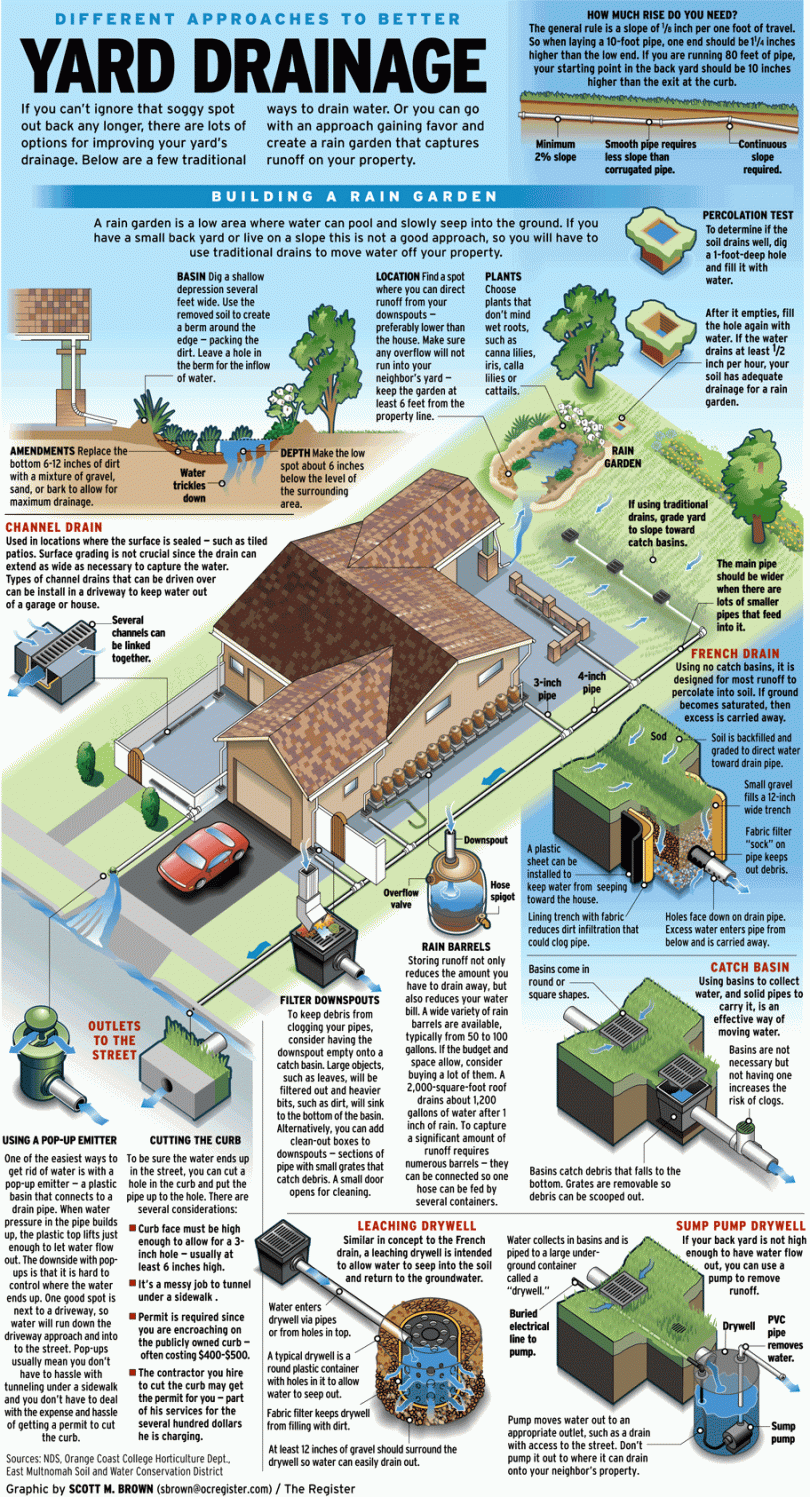top of page



What are Rain Gutters?
The best gutters are ‘troughs’ or channels that run the horizontal length of your roof eave and catch the rain before it can splash on the ground. They include ‘downspouts’ or pipes that run down vertically to the ground. Bottom elbows and extensions turn the rain ‘away’ or horizontally again away from the house. Better systems will allow the rain from the spout to drain into an underground ‘storm drain’ pipe that runs to the curb or alley.
Why Do You Need Rain Gutters?
Everyone has tried to go into or out of their home and been soaked during the rain. Have you ever watched your new flowers practically float away in a hard Texas storm? Have you noticed the ditch in the grass along your foundation under the eave? Many homes have very unsightly brown stains along the bottoms of brick and stone walls. All these problems can be corrected with a good rain gutter and drainage system.
Rain water causes wood siding, trim, paint and caulk to weather much faster than normal. Decks under eaves will rot and the wood will warp much to soon. Often homes will experience cracking in brick joints, and sheet rock due to accelerated settling. Doors and windows will not open and close normally. Many problems and costs to the homeowner are due to improper drainage systems around the house.
Soil Engineers generally agree that North Texas soils and clays that become overly saturated by rains will expand and actually ‘lift a home foundation up’ causing great damage. Dry weather spells following the rain will contract the earth and ‘foundations can fall’. Foundation repair companies always recommend a well built rain gutter and draining system for your home’s perimeter. These usually only cost between 1/2% to 2% of a homes value – it is the BEST INVESTMENT you can make!
Are You Set Up For Proper Drainage?
Look around the foundation of your house. First take a look at the yard around the foundation, make sure that, especially in the back yard next to your foundation slopes away from the foundation, not towards it. Making flower beds and adding top soil to the area will typically settle lower than the surrounding dirt causing the ground to sink in and slope towards your house. If necessary, add dirt up against the foundation to create at least a 2″ height difference between the back of the house to the rest of the yard on an increasing 2” height difference sloping away from the house and the foundation to ensure proper drainage.
Check Your Downspouts and Gutters
Your roof and gutters collect a lot of water and debris, which can build up into the drain causing back flow and spilling into the yard closer than you would like to the foundation. Over time the water running along the foundation could break away at the outside membrane as it trickles through the surrounding soil. A waterproofing contractor like JRGCS can identify these problems for you if you don’t upkeep on the drainage that was installed at the time of the new build.
Landscape & Foundation Drainage Services
Contact us today for a professional consultation and evaluation to see if any of the below Drainage Services are right for you.
Drainage Installations:
-
Erosion Control
-
Catch Basins & Grates
-
Channel Drains
-
Downspout Diversion
-
French Drains
-
Foundation Drainage
-
Grading
-
Surface Drains
-
Top Soil
-
Culverts
Symptoms of Poor Landscape Drainage
Landscape water drainage issues are very common in the DFW area and many times these could have been prevented. Unfortunately, most home owners do not consider prevention until a major drainage problem occurs and then it is too late.
JRCGS recommends inspecting your property twice per year. Some home inspection signs are so simple to spot that most homeowners already know if they are experiencing trouble areas. Below are just some of the symptoms our landscape technicians identify as a potential problem of poor landscape drainage:
-
Backyard Flooding
-
Excess Standing Water
-
Mold Growing
-
Mosquitoes
-
Foundation Issues
-
Water Entering Your Home
-
Wet Mushy Grass
If you suspect any of the above symptoms of landscape drainage problems you should act quickly to prevent additional water damage or basement foundation problems. Letting poor drainage conditions persist can lead to cracked foundations and erosion runoff. Let us help you protect your home and landscape today!




bottom of page
